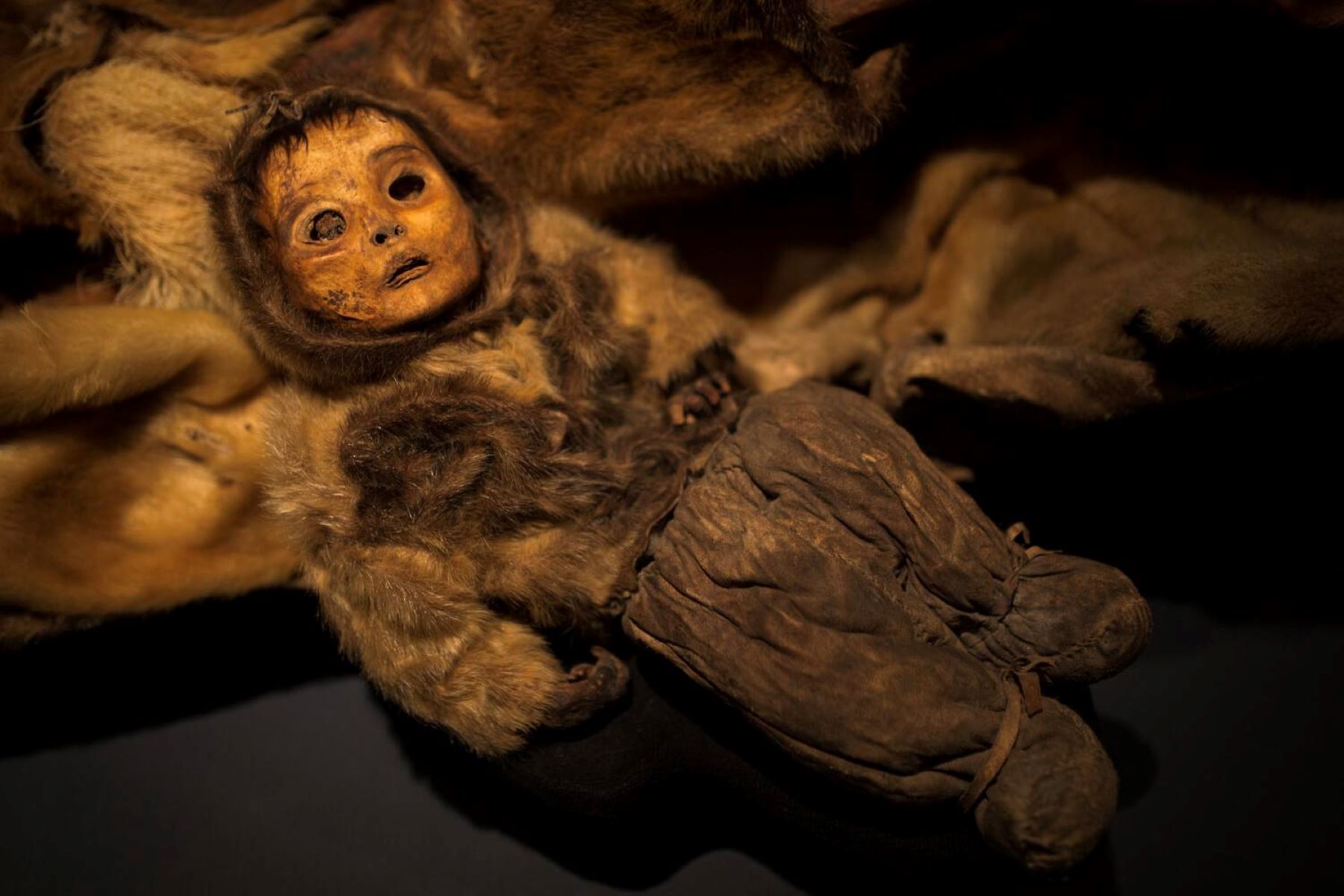
Ever wondered about the ancient secrets hidden in Greenland? The Qilakitsoq mummies, discovered in 1972, offer a fascinating glimpse into the past. These eight well-preserved mummies, found in a remote Inuit settlement, date back to around 1475 AD. Why are they so important? They provide invaluable insights into the lives, health, and customs of the Inuit people from centuries ago. What makes them unique? The natural mummification process, aided by the cold Arctic climate, has kept their features remarkably intact. Curious to learn more? Let's dive into 35 intriguing facts about these incredible mummies that continue to captivate historians and scientists alike.
Key Takeaways:
- The Qilakitsoq mummies, discovered by accident in Greenland, offer a rare glimpse into ancient Inuit culture, showcasing well-preserved bodies, clothing, and artifacts.
- Ongoing research on the Qilakitsoq mummies continues to unravel mysteries about their health, diet, and cause of death, shedding light on the lives of ancient Inuit people.
Qilakitsoq Mummies: A Glimpse into the Past
The Qilakitsoq mummies offer a fascinating window into the lives of ancient Inuit people. Discovered in Greenland, these mummies have captivated researchers and history enthusiasts alike. Here are some intriguing facts about these well-preserved relics.
The Discovery
The Qilakitsoq mummies were found by accident, but their discovery has provided invaluable insights into ancient Inuit culture.
- In 1972, two brothers, Hans and Jokum Grønvold, stumbled upon the mummies while hunting in Greenland.
- The mummies were found in an icy tomb near the abandoned settlement of Qilakitsoq.
- The site contained eight mummies: six women and two children.
- The mummies were buried in two separate graves, one containing three bodies and the other five.
- The bodies were remarkably well-preserved due to the cold, dry conditions of the Arctic.
Preservation and Condition
The state of preservation of the Qilakitsoq mummies is extraordinary, offering a rare opportunity to study ancient human remains.
- The mummies are estimated to be around 500 years old, dating back to the 15th century.
- Their skin, hair, and even some internal organs remained intact.
- The cold climate and dry air helped prevent decomposition.
- The mummies were dressed in traditional Inuit clothing made from animal skins and fur.
- Some of the mummies still had tattoos visible on their skin.
Cultural Insights
The Qilakitsoq mummies provide a wealth of information about the culture and lifestyle of the Inuit people.
- The clothing found on the mummies included parkas, pants, and boots, all made from animal hides.
- The intricate stitching on the garments suggests a high level of craftsmanship.
- The presence of tattoos indicates that body art was a part of Inuit culture.
- The mummies were buried with various artifacts, including tools and personal items.
- The burial site suggests that the Inuit practiced complex burial rituals.
Health and Diet
Studying the mummies has revealed much about the health and diet of the ancient Inuit.
- Analysis of the mummies' hair showed that their diet was rich in marine mammals like seals and whales.
- Some of the mummies showed signs of malnutrition, indicating periods of food scarcity.
- Dental examinations revealed that the Inuit had good oral health, likely due to their diet.
- One of the mummies, a child, had Down syndrome, providing evidence of the condition in ancient populations.
- The mummies also showed signs of arthritis and other age-related conditions.
The Mystery of Their Deaths
The cause of death for the Qilakitsoq mummies remains a topic of speculation and research.
- Some of the mummies showed signs of exposure to cold, suggesting they may have died from hypothermia.
- Others had injuries that could have been caused by accidents or conflicts.
- The presence of two children among the mummies raises questions about their deaths.
- One theory suggests that the group may have been abandoned during a harsh winter.
- Another theory posits that they could have succumbed to disease.
Modern Research and Analysis
Ongoing research continues to shed light on the Qilakitsoq mummies and their significance.
- Advances in technology have allowed for more detailed analysis of the mummies' DNA.
- Genetic studies have provided insights into the ancestry and migration patterns of the Inuit.
- Radiocarbon dating has helped refine the estimated age of the mummies.
- Isotope analysis has offered clues about the mummies' diet and environment.
- Researchers continue to study the mummies to learn more about ancient Inuit health and lifestyle.
Public Interest and Display
The Qilakitsoq mummies have captured the public's imagination and are now displayed for educational purposes.
- The mummies are housed at the Greenland National Museum in Nuuk.
- They are one of the museum's most popular exhibits, attracting visitors from around the world.
- The mummies have been featured in documentaries and television programs.
- They have also been the subject of numerous academic papers and books.
- The discovery of the Qilakitsoq mummies has helped raise awareness about the rich history and culture of the Inuit people.
The Legacy of Qilakitsoq Mummies
The Qilakitsoq mummies offer a fascinating glimpse into the past. These well-preserved remains, found in Greenland, date back to the 15th century. They provide valuable insights into the lives, health, and customs of the Inuit people. The mummies' clothing, made from animal skins, showcases their resourcefulness and adaptation to harsh Arctic conditions.
Researchers have learned a lot from studying these mummies, including details about their diet, which consisted mainly of marine mammals. The discovery also highlights the importance of burial practices and the respect the Inuit had for their deceased.
These mummies continue to captivate scientists and historians alike, shedding light on a culture that thrived in one of the world's most extreme environments. The Qilakitsoq mummies remind us of the resilience and ingenuity of the Inuit people, leaving a lasting legacy for future generations to explore.
Frequently Asked Questions
Was this page helpful?
Our commitment to delivering trustworthy and engaging content is at the heart of what we do. Each fact on our site is contributed by real users like you, bringing a wealth of diverse insights and information. To ensure the highest standards of accuracy and reliability, our dedicated editors meticulously review each submission. This process guarantees that the facts we share are not only fascinating but also credible. Trust in our commitment to quality and authenticity as you explore and learn with us.


